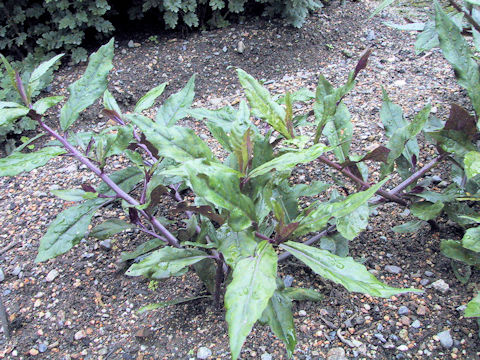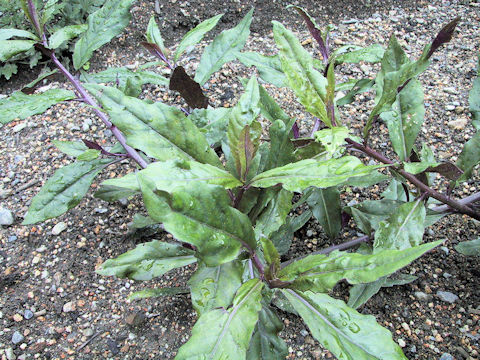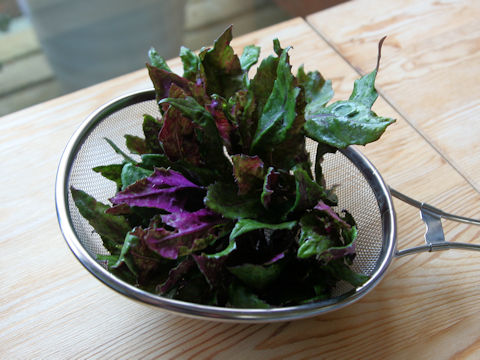
|
|
|
    |
|
|
|
東アジアの熱帯地方が原産です。わが国へは18世紀に中国から渡来しました。熊本県では「すいぜんじそう(水前寺草)」、石川県では「きんじそう(金時草)」また沖縄県では「ハンダマ」と呼ばれ、伝統野菜となっています。茎は軟らかく、長卵形の葉が互生します。葉の裏面は紫色をしています。4月から5月ごろ、花茎を伸ばして散房花序をつけ、黄色または黄赤色の花を咲かせます。 |
|
|
キク科サンシチソウ属の多年草で、学名は Gynura bicolor。英名はありません。 |
|
|
The "Suizenji-na" (Gynura bicolor) belongs to Asteraceae (the Aster family). It is a perennial herb that is native to the tropics of East Asia. It came to Japan from China in the 18th century. It is called "Suizenji-so" in Kumamoto prefecture, "Kinji-so" in Ishikawa prefecture, and "Handama" in Okinawa prefecture, and it is a traditional vegetable. The stems are soft and the long-ovate leaves alternate. The back of the leaf is purple. From April to May, the flower stalks are extended and inflorescences are borne and yellow or yellow-red flowers come in bloom. |
|
|
[上・中1〜2] 京都市左京区「京都府立植物園」にて、2003年07月06日撮影。 [下] 宮城県仙台市宮城野区にて、2022年07月23日撮影。 |

|
|
Shu Suehiro |